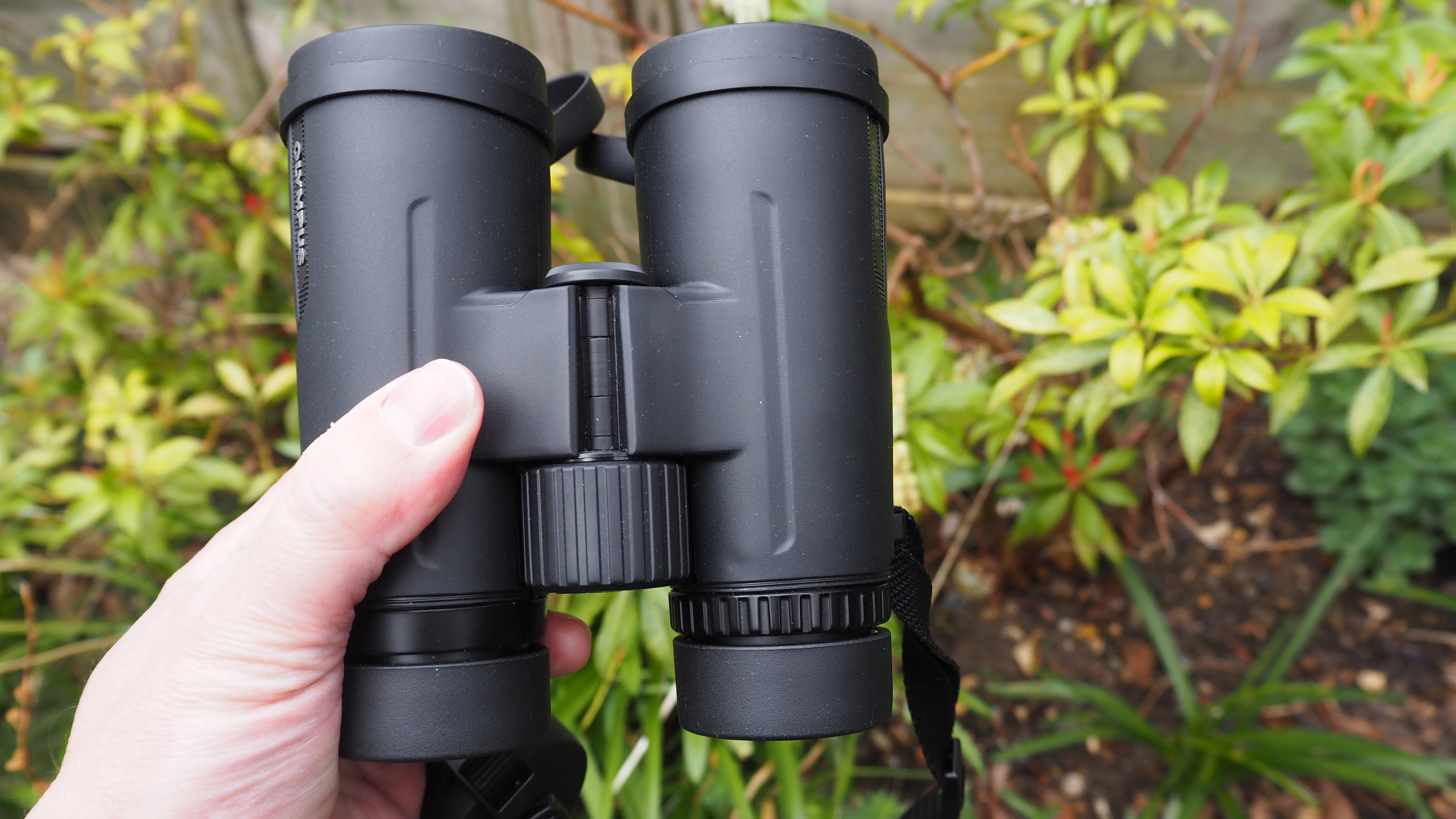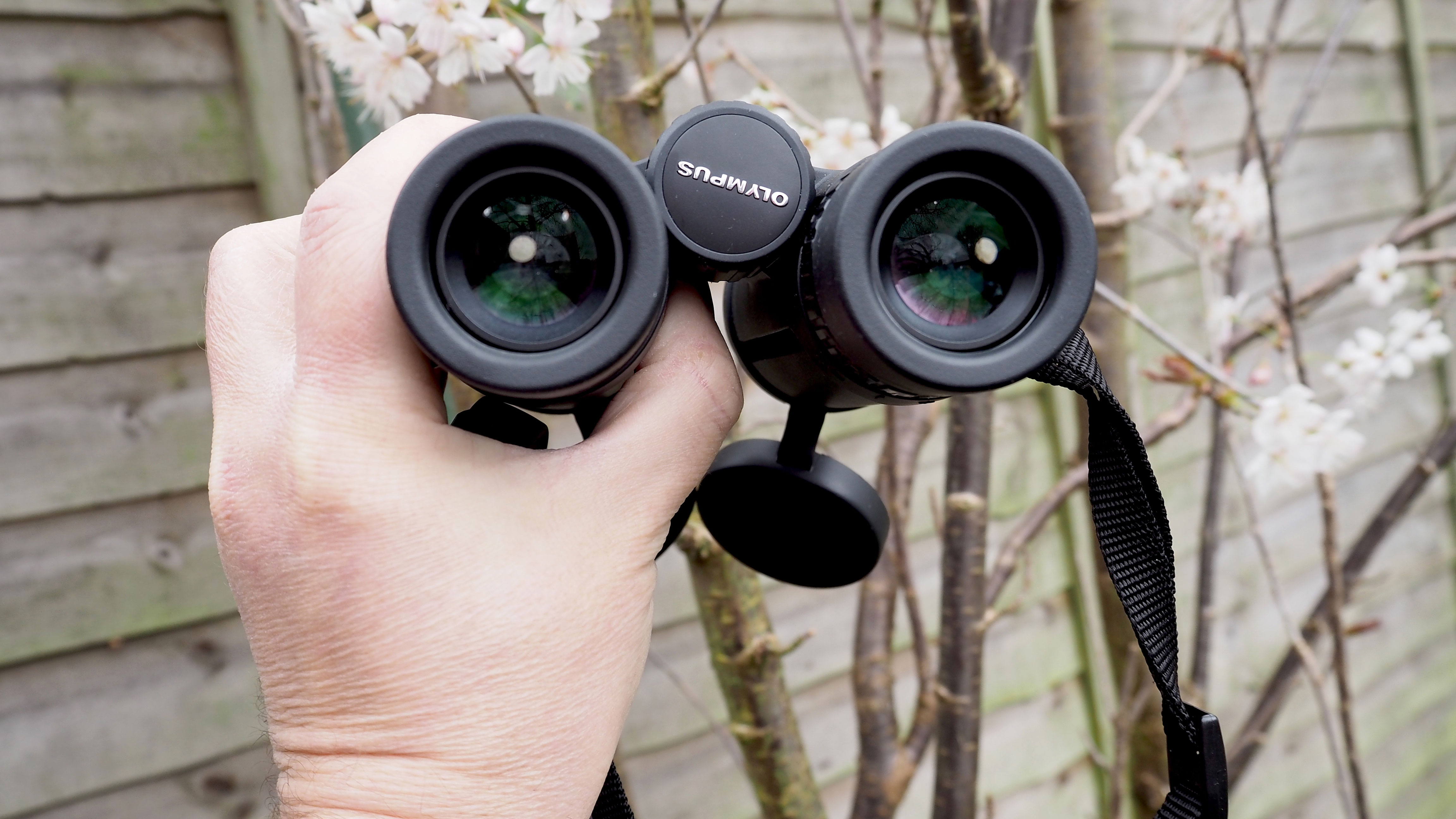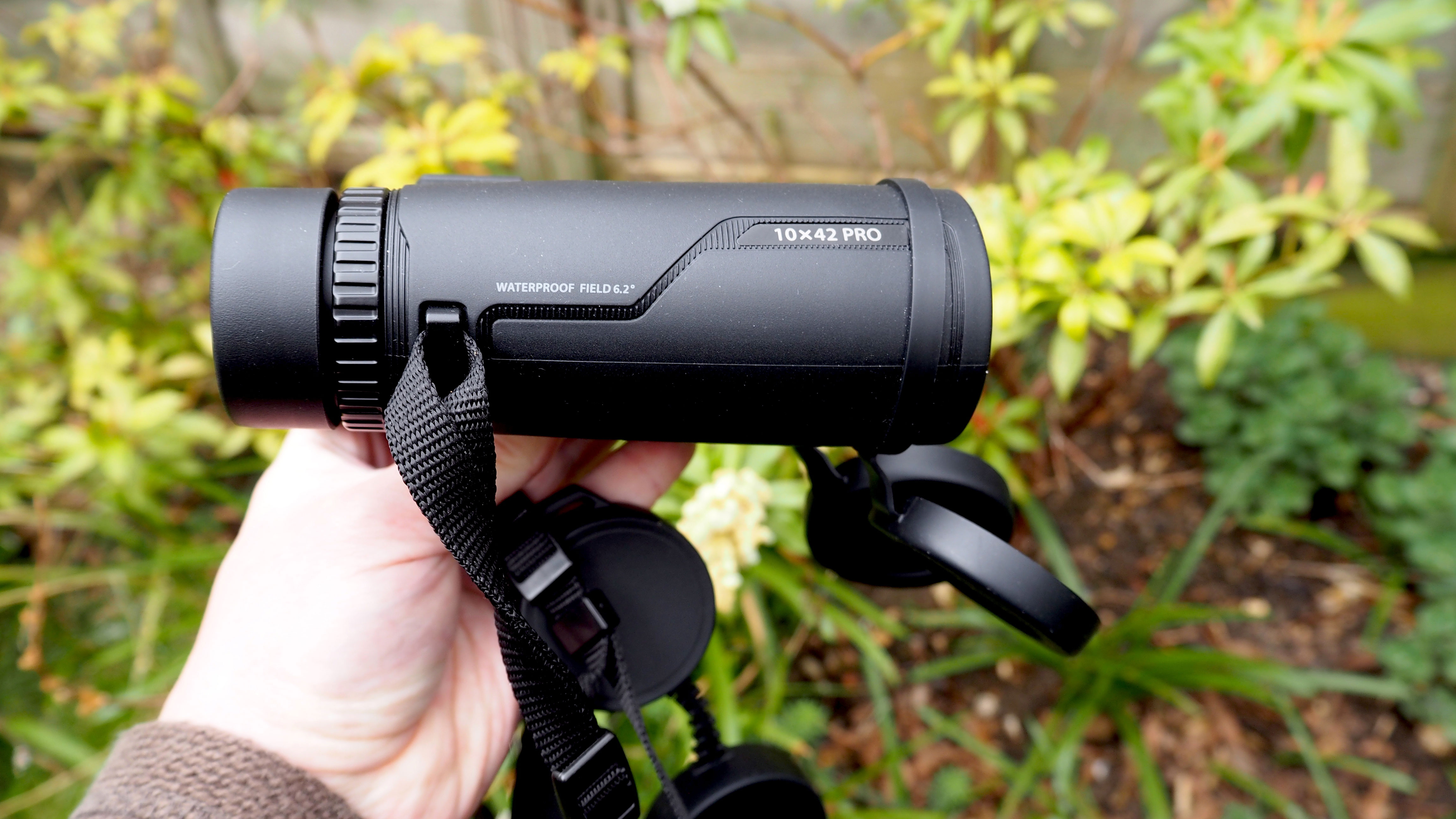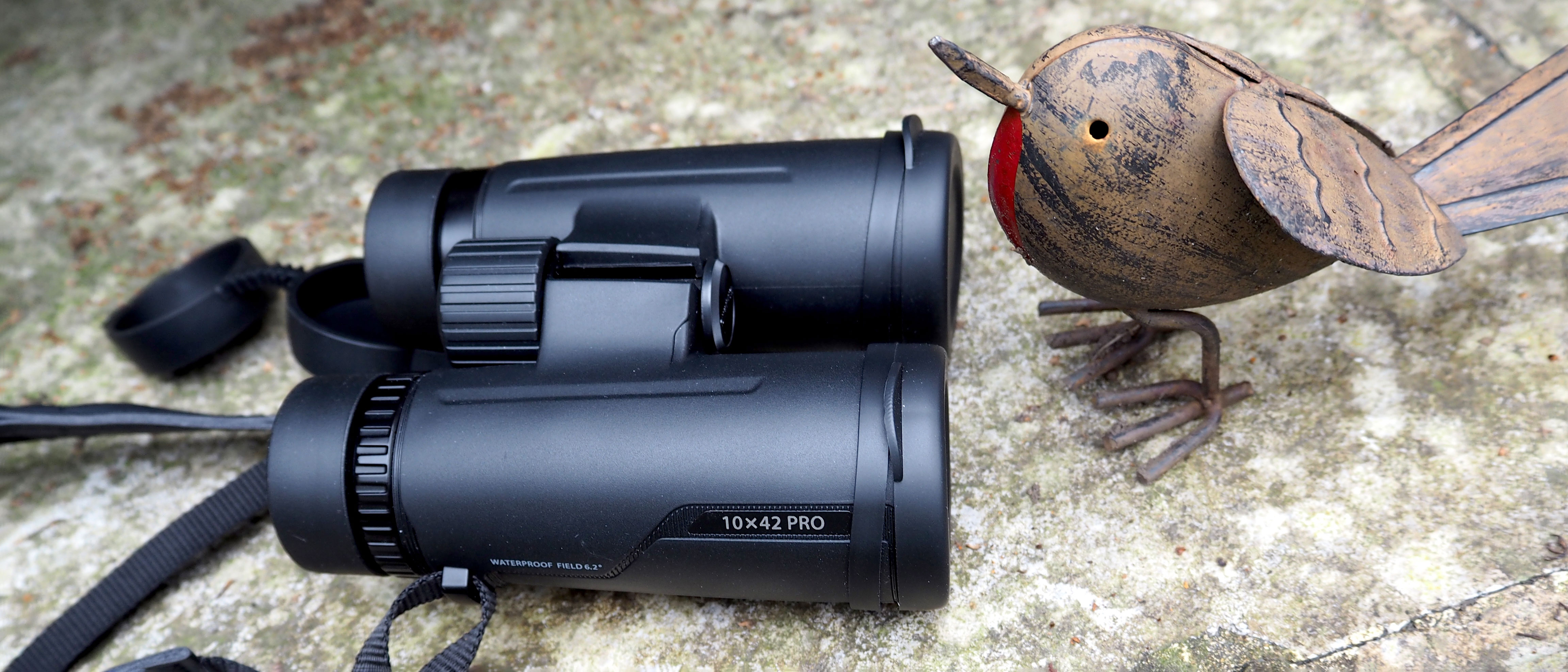Digital Camera World Verdict
Half the price of a Leica 8x42 Trinovid HD binocular and a quarter of the cost of a Zeiss Victory 10x42, while not by any means ‘cheap’, the Olympus 10x42 Pro is nevertheless a good deal for nature lovers and wildlife enthusiasts looking to bring the faraway that bit closer. Though detail and resolving power doesn't seem quite a match for those much higher priced competitors we mentioned, in our opinion it’s still plenty good enough for general purpose, everyday use.
Pros
- +
Compact, lightweight, versatile
- +
Waterproofed and nitrogen filled
- +
Quick to focus and adjust
Cons
- -
High end features push up the price
Why you can trust Digital Camera World
The Olympus 10x42 Pro binoculars come from a maker renowned for its optical expertise, so it’s no surprise that we get the same high performance Zuiko optics provided that it deploys with its camera systems. Moreover, the claim here is the Olympus 10x42 Pro’s optics offer unprecedented light transmittance for their class, so we’ll be able to keep observing as dusk approaches.
With a minimalist design than indicates fuss free usage, these binos are ergonomically constructed with a rubberised exterior that prevents finger slippage, plus a build that prevents any ingress from water if submerged at a depth of one metre for five minutes – not that you’d need to put that to the test under normal circumstances.
An extendable eye relief provides comfort for spectacle wearers, as does a dioptric adjustment ring. Provided accessories include flip down lens caps that can be left attached to the binoculars at all times and provided padded strap.
Specifications
Magnification: 10x
Objective diameter: 42mm
Field of view at 100m: 10.8 metres
Closest focusing distance: 1.5 metres
Eye relief: 16mm
Weight: 665g
Dimensions: 131x140x53mm
Key features

The key specifications here to take note of are obviously that 10x magnification factor, plus the large 42mm objective lens size – both marking this one out as a serious option for bird lovers and wildlife watchers. It delivers this decent level of specification while still being compact enough to conveniently slip into a jacket pocket for days out, or an afternoon’s ramble, though more practically you’ll want to use the provided strap so they’re within hands’ reach at all times.
For the first time in Olympus’ binocular range this model features nano coated optics, the purpose of which is to deliver bright, sharp and consistently clear viewing. The lens coatings here are also usefully oil and water repellent, offering a degree of water resistance that makes them adept for use in the great outdoors. Additionally, these binos are nitrogen purged to help prevent fogging. So, in short, we’re getting all the features we’d expect in this price bracket.
Build and handling

Compact in size and feeling rock-solid and steady when held in the palm, build quality here is as good as expected. In the box with the Olympus 10x42 Pro we get a comfortably padded neck strap that provides not only comfort but also stability when holding the binoculars. We also get rubber eyecup covers that can be threaded through the provided strap, as well as separate lens protectors that attach to the front via a rubberised band. These flip open and dangle below the lens barrels when the binoculars are in use. In short it would be hard to mislay or lose either, while neither actually gets in the way of viewing. Both sets of protectors could simply be slid off and placed back in the box for safekeeping if they did.
As with competing devices of a similar power but a higher price from Zeiss and Leica, the body of the Olympus 10x42 Pro can be folded inwards or expanded outwards to adjust exactly to the spacing of the user’s eyes. A very large and obvious ridged focus wheel is located between the eyepieces, whilst the right eyepiece featured a dioptric adjustment wheel for a more precise focus for those viewing while wearing glasses. For non-spectacle wearers the length of the eye relief is also manually adjustable, with said eyepieces extending when twisted anti-clockwise.
When making adjustments such as the above, we found the ‘action’ of the Olympus to be stiffer and less fluid than that of Zeiss and Leica binos costing twice or four times as much, but in truth we’d prefer that to the components alternatively feeling too loose. Generally build quality here is very good indeed and we would expect to get years of use out of these Olympus ‘bins’.
Performance

As well as the ability to view faraway subjects up close and personal, close up performance on the made-in-China Olympus 10x42 Pro is also impressive, with the ability to view subjects as near as 1.5 metres – so when that skittish squirrel leapt ever closer to us, we were able to keep tracking it, while adjusting the focus wheel in tandem. Versatility and flexibility is what we are after here and that’s largely what we get; the binoculars are easy to use and simple to focus in a matter of seconds, avoiding the user missing that magic moment.
Verdict
Olympus has managed to deliver an impressive 10x42 offering in a compact form factor that closely mirrors what we’d expect a lesser-specified 8x42 unit to look and feel like from competing brands. Though personally the performance, for us, didn’t quite match the level of detail delivered by similarly specified Leica or Zeiss binoculars costing double or four times what this Olympus does, for anyone after a pair of general purpose binoculars that will last the course, the Olympus 10x42 Pro comes highly recommended. If you’re not already convinced by its good value alone, then consider the fact that the 15-year warranty provided here gives extra peace of mind.
Read more:
• Best binoculars
• Best budget binoculars under $100
• The best monoculars in 2021
• Best binocular harness
• The best spotting scopes
• The best opera glasses
• The best night vision goggles and binoculars
• The best telescopes for astrophotography
• The best microscopes in 2021
• Best borescopes and inspection cameras
• The best portable hides for wildlife photography
Gavin has over 30 years’ experience of writing about photography and television. He is currently the editor of British Photographic Industry News, and previously served as editor of Which Digital Camera and deputy editor of Total Digital Photography.
He has also written for a wide range of publications including T3, BBC Focus, Empire, NME, Radio Times, MacWorld, Computer Active, What Digital Camera and the Rough Guide books.
With his wealth of knowledge, Gavin is well placed to recognize great camera deals and recommend the best products in Digital Camera World’s buying guides. He also writes on a number of specialist subjects including binoculars and monoculars, spotting scopes, microscopes, trail cameras, action cameras, body cameras, filters and cameras straps.


